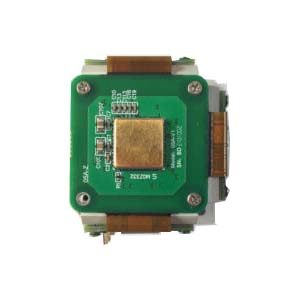MEMS sensor, or Microelectro Mechanical Systems, is a multidisciplinary frontier research field developed on the basis of microelectronics technology. After more than 40 years of development, it has become one of the major scientific and technological fields that the world pays attention.The technology uses silicon semiconductor processing technology to integrate the mechanical system and electronic circuit in a very small size, the mechanical system converts the vibration signal into an electrical signal, the electronic circuit completes the acquisition and processing of the electrical signal, and the two form a collaborative system to realize the intelligent detection of vibration signals, analysis and other complex functions.
Its main working principle is to prepare a small mass block inside the sensor, when the external force is applied, according to the principle of inertia, the mass block will produce a small displacement due to accelerated motion. By detecting this displacement, the MEMS accelerometer can accurately measure the magnitude and direction of the acceleration.
The devices of MEMS sensors can be easily welded on the PCB board, easy to package and batch manufacturing, and some MEMS sensors can integrate multiple functions such as signal acquisition and processing, and few external devices are required, which provides great convenience for engineering applications in terms of high integration and low cost
We are mainly talking about vibration mems accelerometers. There are several types of mems accelerometers as follows: piezoresistive micro-accelerometers, capacitive micro-accelerometers, torsion-type micro-accelerometers, and tunnel-type micro-accelerometers.
The main advantages of MEMS accelerometers are: small size, light weight, low power consumption, high reliability, high sensitivity, easy integration, etc.This ER-MA-5 high-precision MEMS accelerometer also has the characteristics of small size, light weight and low energy consumption, and can be widely used in vibration detection, attitude control, security alarm, consumer applications, motion recognition and status recording. And can be combined with gyroscopes and magnetometers to form an inertial measurement unit (IMU).
Status quo of MEMS accelerometers: At present, some low-end applications can be made in China, and high-end industrial applications are still quite different from those used abroad. Mainly in the frequency response range, noise ratio, resolution and so on.
The main working principle of the piezoelectric ceramic sensor is the positive piezoelectric effect. After the external force is applied, the generated charge can only be saved when the loop has an infinite input impedance, but in fact there is no such situation, so the piezoelectric Ceramic sensors can only be used to measure and sense dynamic or quasi-static stress.
Piezoelectric sensors
The advantages of piezoelectric sensors are bandwidth, high sensitivity, high signal-to-noise ratio, simple structure, reliable operation and light weight. Piezoelectric crystals can work at a temperature above 400°C for a long time, and the instantaneous (10 millisecond) impact temperature can reach above 4000K. It can withstand high surface pressure (>150N/mm2), high stiffness, good linearity and low hysteresis. Constant sensitivity in a wide temperature range, wide frequency response range, can withstand almost unlimited load cycles, very high insulation resistance.
Comparison of MEMS accelerometers and piezoelectric ceramic accelerometers:
1. Piezoelectric ceramics have a wider frequency response range.
2. MEMS have good low frequency performance.
3. The same performance price piezoelectric ceramics are cheaper.
4. MEMS consistency is better.
5.The difference in size makes MEMS sensors more sensitive and consume less power than conventional piezoelectric sensors that are common. Especially in the field of wireless portable sensors, limited by battery power, the structural characteristics of MEMS make an excellent contribution to reducing the size of products and extending the service life.
More Technical Questions
1.Application of MEMS Accelerometer in North Finder
2.How to choose a MEMS accelerometer?
3.Application of mems accelerometer in petroleum logging
4.How to Distinguish MEMS Accelerometer and MEMS Gyroscope Correctly?
5.The Role of MEMS Accelerometers in Inertial Navigation
6.What are the advantages of MEMS accelerometers?
Products in Article







